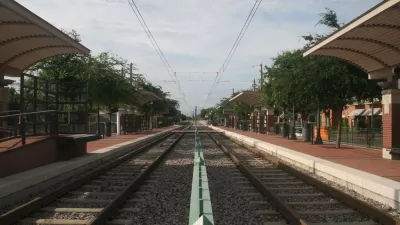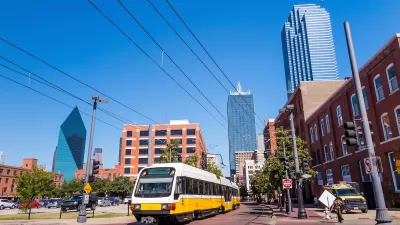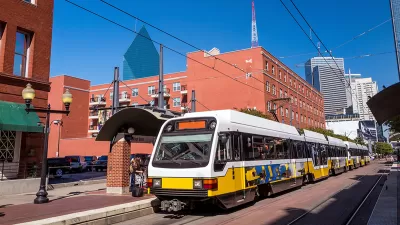30 years ago, voters in North Texas approved a sales tax to fund the Dallas Area Rapid Transit (DART) system based on promises of reducing congestion, spurring development and sustainable funding. Has the system met its goals? Depends who you ask.

"Automobile-loving North Texans took a radical step 30 years ago. That’s when voters in more than a dozen cities approved a 1 percent sales tax to fund Dallas Area Rapid Transit, now America’s largest light rail system," writes Tom Benning. "Tuesday’s anniversary of that hotly contested election is more than just a date on the calendar. The public transportation proposal pitched to voters in 1983 extended out almost three decades exactly: Service plans went to 2010, while the financial strategy stretched into 2013."
"The question, then, is simple: Has DART kept its early promises to those who voted to try something beyond a deeply rooted embrace of cars and seemingly endless highways?"
Take the congestion argument for example. Though 40,000 people ride the rail line every day, presumably taking many cars off the road, "Dallas-Fort Worth is still the 13th-most-congested urban area in America, according to the Texas A&M Transportation Institute."
“Reducing congestion was probably the worst argument they could’ve made,” said Robert Bruegmann, an expert on urban sprawl at the University of Illinois at Chicago. “It’s an impossible thing to fulfill.”
FULL STORY: At 30, DART still faces growing pains

Planetizen Federal Action Tracker
A weekly monitor of how Trump’s orders and actions are impacting planners and planning in America.

Chicago’s Ghost Rails
Just beneath the surface of the modern city lie the remnants of its expansive early 20th-century streetcar system.

San Antonio and Austin are Fusing Into one Massive Megaregion
The region spanning the two central Texas cities is growing fast, posing challenges for local infrastructure and water supplies.

Since Zion's Shuttles Went Electric “The Smog is Gone”
Visitors to Zion National Park can enjoy the canyon via the nation’s first fully electric park shuttle system.

Trump Distributing DOT Safety Funds at 1/10 Rate of Biden
Funds for Safe Streets and other transportation safety and equity programs are being held up by administrative reviews and conflicts with the Trump administration’s priorities.

German Cities Subsidize Taxis for Women Amid Wave of Violence
Free or low-cost taxi rides can help women navigate cities more safely, but critics say the programs don't address the root causes of violence against women.
Urban Design for Planners 1: Software Tools
This six-course series explores essential urban design concepts using open source software and equips planners with the tools they need to participate fully in the urban design process.
Planning for Universal Design
Learn the tools for implementing Universal Design in planning regulations.
planning NEXT
Appalachian Highlands Housing Partners
Mpact (founded as Rail~Volution)
City of Camden Redevelopment Agency
City of Astoria
City of Portland
City of Laramie





























